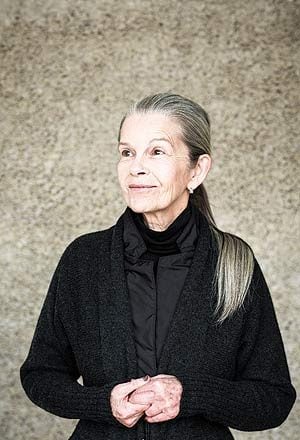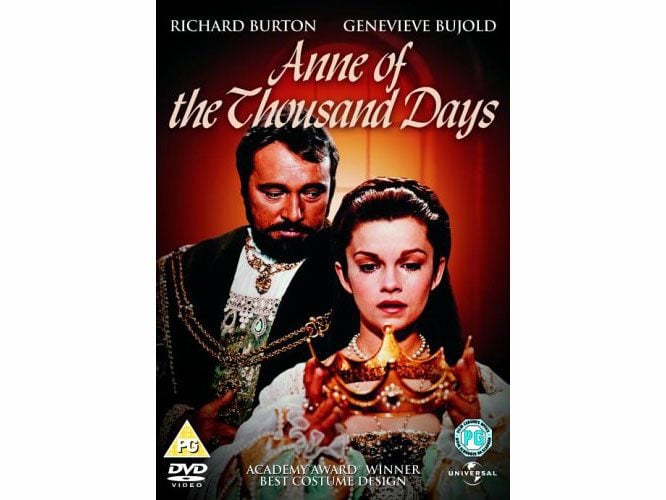
In Conversation with Geneviève Bujold
In the 2012 film Still Mine, Geneviève Bujold stands on a beach and stares out at the ocean, her features as gentle as the waves rolling into shore. It’s a hauntingly lovely scene, one in which the actor, grey-haired and 70, radiates that ineffable, watchable quality that made her Canada’s most luminous export more than four decades ago.
Written and directed by Torontonian Michael McGowan, Still Mine features Bujold as Irene, the wife of a proud New Brunswick farmer who battles local bureaucrats over the new house he’s building for his Alzheimer’s-stricken spouse. Though Irene is often presented as a figure of serenity, the fact that she’s using this quiet waterside moment to sneak her first cigarette in 50 years points to a more irascible side of her personality. “She’s quite feisty,” says Bujold.
The word applies equally well to Bujold, who has always been too headstrong to conform to expectations of what a star should be. Raised by working-class parents in Montreal’s east end, she began lighting up stages and screens soon after exiting theatre school. After embarking on a series of extraordinary collaborations with Quebec directors like Michel Brault and Paul Almond (her first husband), the petite ingenue gained international renown in 1969 for her performance as the Anne Boleyn to Richard Burton’s King Henry VIII in Anne of the Thousand Days.
Yet Bujold soon clashed with Hollywood brass over roles that could’ve ensured her big-league fame but wouldn’t secure her happiness. She famously walked away from her contract with Universal Studios, and the resulting lawsuit was dropped only when she agreed to appear in the schlocky Earthquake and Swashbuckler. She now approaches her work history with equanimity. “The films I did were the films I was supposed to do,” she says of her remarkably varied, and arguably erratic, career. “I’m not an actress who can do anything. I would not do it if I couldn’t see on the page something I could become.”
The 1978 suspense megahit Coma gave Bujold marquee status in Hollywood but did nothing to temper her desire to go her own way: she retired from acting for several years to be a full-time mother; and found herself the subject of intense fan scrutiny in 1994 when she abruptly left her leading role in the television series Star Trek: Voyager three days into shooting, blaming the long hours.
In recent years, Bujold has been seen largely in supporting roles in small indies. That’s part of the appeal of Irene and Still Mine. Based on a true story, the film has a built-in hook: it echoes two acclaimed late-life love stories, Sarah Polley’s feature directorial debut Away From Her, and 2012’s Oscar winning Amour. Yet it also sets itself apart by being the most romantic of the three. McGowan, Bujold and American star James Cromwell demonstrate tremendous sensitivity and warmth in their portrayal of an elderly couple whose fierce bond is tested by new challenges. It’s rare for a film to acknowledge that seniors may still feel the passions simmering within Irene and Craig; Still Mine is also frank about the hardships that wear down any lifelong relationship. As Bujold says, “Love is not just about a happy face. It opens all the doors if you’re willing to go through them.”
Making the film in northeastern Ontario, near North Bay, called up memories of Bujold’s grand-parents-farmers who lived near Quebec’s Gaspé coast-and of family trips to the Laurentians.
These childhood experiences instilled an awe of nature in Bujold, something reflected in her home in Malibu. ”I live in a tiny little place,” she says. “It’s like a hobbit house. I open the door of my bedroom at night and I hear the coyotes howling, which can be chilling when they get going. I can hear the crickets in the ravine and the frogs. There’s a whole natural life there that nourishes me.”
Her eyes widen as she remembers the exact moment when she was seduced by California, where she’s lived since March of 1974. “I arrived with my six-year-old son,” she says. “There we were on the sand after all the slush in Montreal. We stood for a good half-hour without moving—my sweet little kid could not believe it. I was supposed to go for three months, but I’ve been there ever since.”
For Bujold to find peace of mind in a place so closely associated with glitz, glamour and artificiality seems like a fitting idiosyncrasy for a woman with such a singular career. “That’s why I sometimes think I shouldn’t plan too much,” she says. “You’ve got to stay open.”

Five memorable Geneviève Bujold movies:
Anne of the Thousand Days (1969): A stirring performance as the doomed Anne Boleyn earned Bujold a Golden Globe Award, an Academy Award nomination and—according to some unkind remarks in his recently published diaries—a multi-year affair with her co-star Richard Burton.
Kamouraska (1973): Bujold secured her national-treasure status with the lead role in Claude Jutra’s adaptation of the classic Anne Hébert tragedy about love and murder in rural Quebec.
Coma (1978): Appearing opposite Michael Douglas in a Michael Crichton medical thriller finally made Bujold a full-fledged Hollywood star at the age of 35.
Dead Ringers (1988): Bujold gave one of her most compelling showings—as a woman involved with twin gynecologists—in this creepfest that’s creepy even by David Cronenberg standards.
The Trotsky (2009): Bujold returned to Montreal and proved there truly are no small roles when she took on the supporting part of a hard-nosed school-board official in the winsome Jay Baruchel comedy.
Check out these 10 Famous Movies You Didn’t Know Were Filmed in Canada!